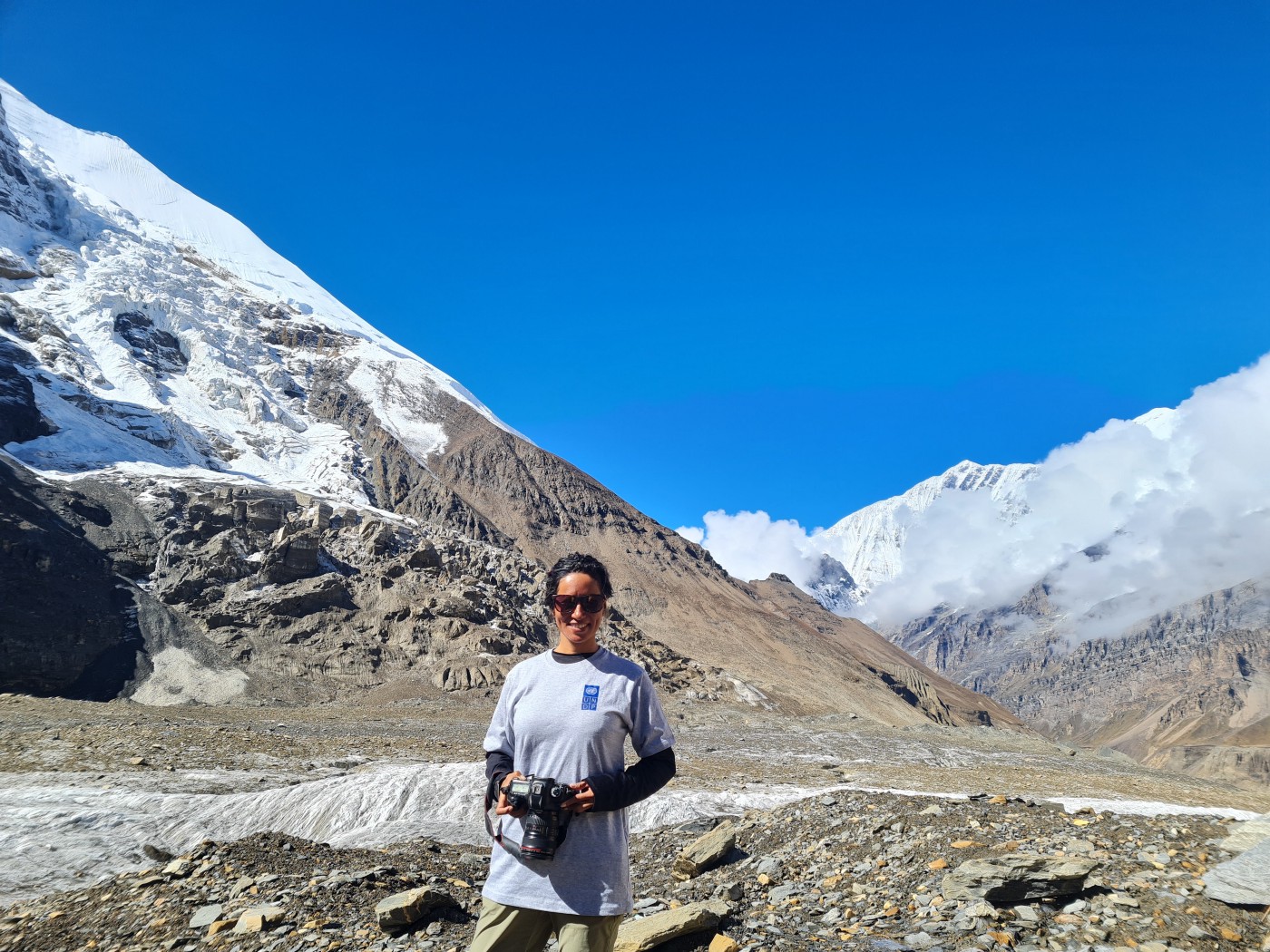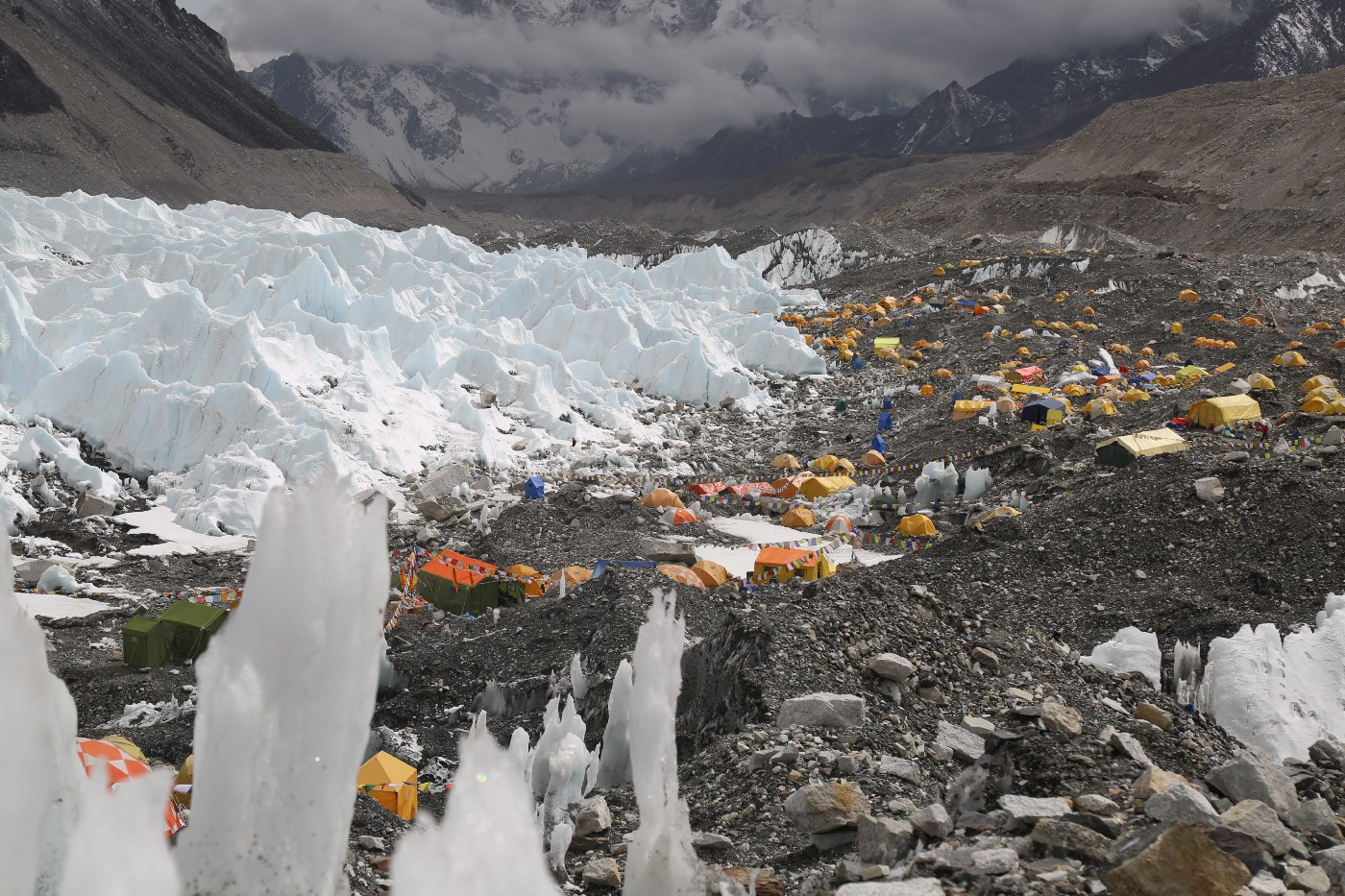I’ve seen the mountains melting
August 1, 2022

In 2018, I summited Everest (8,848m), and four years later, in 2022, I climbed Lhotse (8.516m), one of the seven eight-thousander peaks in Nepal I have climbed so far. In these four years, the changes I witnessed in the Himalaya have been quite alarming.
In 2022, while on my way to Lhotse in the Khumbu Icefall, I saw a stream of rocks and water flowing down the mountain. At times, it felt like I was canyoning up a waterfall. That same area had been covered in snow in 2018 when I passed through the Icefall to climb Everest.

Everest Base Camp (5,356m)
As I moved upwards, I could see the snow had melted, pushing the snow line further up. Earlier, climbers would reach crampon point — the point from which crampons become necessary to walk on the snow and ice — some 200 metres from Camp I, but in 2022, this point too had shifted upwards, along with the snow line. Areas that were once covered with snow were now filled with bare rock. Both Everest and Lhotse climbers use the same route up to Camp III.
At Camp II, whenever I lay down in my tent, I could hear the sound of water flowing around me. I felt like I was sleeping on a river bank. All around us, the snow and ice were melting and creating a flow of water that was much bigger than in 2018. We were able to fetch water from just beside our camp, which was not possible earlier as the entire area was covered in snow.
Climbers have also had to change the starting time for their summit push. In the past, climbers would start the push for Everest or Lhotse at around 3:00 am. But these days, they start at around 11 pm or midnight. Sherpa friends tell me that this is necessary since the snow now melts faster and thus can make the path slippery and create obstacles.
If the snow keeps melting at the rate that I witnessed, Camp II, which is like valley now, will soon turn into a big lake.
The increased rate of snow melt in the high Himalaya has also meant that climbing routes are changing. For instance, on Kanchenjunga, climbers now use a different route to get from Camp III to Camp IV as the old route is too risky due to increased snowmelt. There have been similar changes to routes on other peaks as well.
The impacts of climate change are more visible on the Himalaya than anywhere else. Increased melting of the snow and ice, along with retreating glaciers and snowlines, show that climate change is already having very real consequences on the world’s highest peaks.
I have seen arguments that say that climbers should be prohibited from the mountains, as they too are contributing to climate change. I disagree. It is true that pollution, especially solid waste, has been increasing on the mountains, but that should be tackled by both the climbers and the expedition companies. Instead of prohibiting climbers, the government should ensure that climbers and expedition companies take more responsibility for the waste that they generate.
But, there is a larger issue here. Mountain climbing has turned into a luxury, which is what contributes a lot more to pollution. Expeditions now mobilize large numbers of people, including guides, porters, cooks and assorted helpers. More resources and logistics are utilized to provide climbers with a comfortable experience. In the Base Camp, you get almost all the luxuries you get in cities like Kathmandu. All of this generates a lot of waste and contributes both directly and indirectly to gradual degradation of the mountains.
We need to understand that mountain climbing is supposed to be an adventure, not a luxury trip. Luxurious facilities can make a dangerous activity easier but they also impact the environment in severe ways and increase our carbon footprint. The climbers, expedition companies and the government should all realize this. Measures must be taken to ensure that climbers are able to access the mountains but do not do so at the cost of the environment with unnecessary luxuries.
In Nepal’s Himalaya, the realities of climate change are glaringly evident. It will be the Nepali people who will face the brunt of the consequences in the years to come despite having contributed little to the climate crisis. But mountaineers from around the globe will also lose out on opportunities to stand on the roof of the world. After all, the mountains belong to everybody and the world must come together to preserve them for future generations.

Shrestha is the first female mountaineer to summit seven peaks above eight thousand metres in Nepal. She is a consulting photographer at UNDP Nepal and all photos in the article were taken by the author.

 Locations
Locations